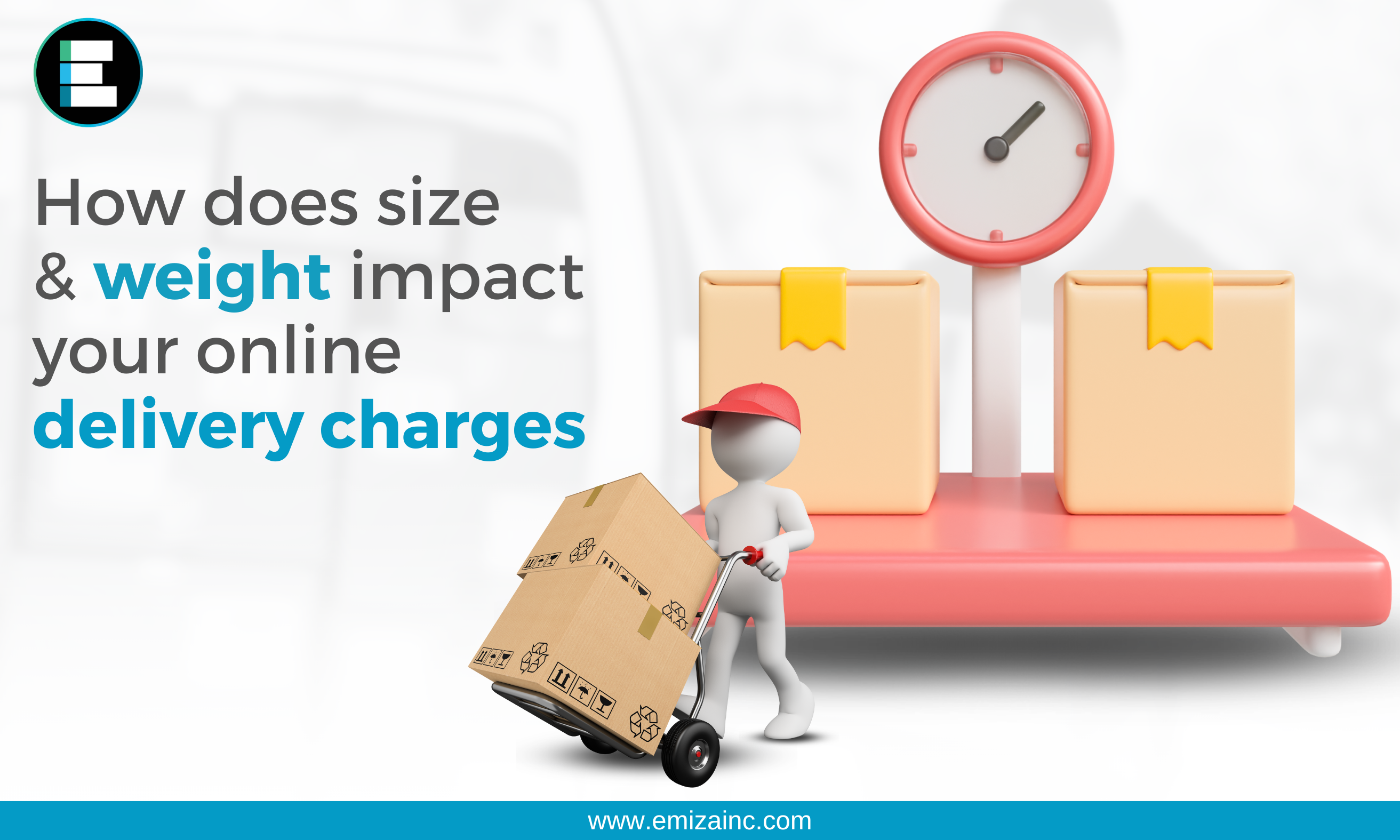Have you ever wondered why your online delivery charges fluctuate, seemingly at random? That’s because it lies in the size and weight of your packages. In the world of e-commerce, understanding how these factors impact your shipping costs can be the key to optimising your operations and boosting your profitability. Come and join us as we explore how the size and weight of your packages affect the costs of your online deliveries. We’ll reveal strategies that can completely change the way you handle shipping and help your business reach new levels of success!
Understanding the Logistics Behind Online Deliveries:
Before delving into the impact of size and weight, it’s essential to grasp the logistics involved in the delivery process. When you place an order online, the retailer or e-commerce platform needs to ship the product from their warehouse or distribution centre to your doorstep. This delivery process requires careful planning, coordination, and investment in infrastructure, vehicles, and personnel.
How Price Calculated Is For A Product/Package
The price of a product or package is typically calculated by considering several factors. Here are some common elements that businesses take into account when determining the price:
Price is calculated by considering the cost of production, including materials, labour, and overhead, and adding a markup for profit margin.
Market analysis helps determine the price range that aligns with customer expectations and perceived value.
The value proposition of the product or package and pricing strategies influence the final price.
External factors such as market conditions and regulatory requirements can also impact pricing decisions.
Pricing is an ongoing process that requires adjustments based on market dynamics and customer feedback.
Dimensional Weight and Its Significance:
Dimensional weight is a concept used in the shipping industry to determine the cost of shipping packages based on their size rather than their actual weight. It takes into account the package’s dimensions, typically its length, width, and height, and calculates the volumetric weight. If the dimensional weight exceeds the actual weight, the shipping charges are determined based on the dimensional weight.
For example, let’s say you have a package that weighs only 5 kilograms but is large and bulky. According to the dimensional weight calculation, the package’s dimensions result in a volumetric weight of 8 kilograms. In this case, the shipping charges would be based on the higher dimensional weight of 8 kilograms rather than the actual weight of 5 kilograms, resulting in potentially higher shipping costs for the package.”
Impact of Size on Delivery Charges:
Larger packages take up more space in delivery vehicles and require additional handling, which can lead to increased costs. Carriers have limited space within their vehicles, and accommodating large packages reduces the overall capacity available for other shipments. As a result, carriers often impose size restrictions or apply surcharges for oversized packages to account for the additional space and resources required for delivery.
Influence of Weight on Delivery Charges:
The weight of a package directly affects the cost of transportation. Heavier packages require more fuel and exert greater strain on delivery vehicles, resulting in higher operational expenses. Additionally, transporting heavy packages may necessitate specialised equipment or additional personnel for loading and unloading, leading to increased handling costs. Consequently, shipping carriers typically charge higher fees for heavier shipments.
Implications for Businesses:
For e-commerce businesses, efficient shipping strategies are vital for maintaining customer satisfaction and profitability. Companies need to carefully analyse and optimise their packaging practices to minimise the dimensional weight of packages. Streamlining the packaging process not only helps reduce shipping costs but also ensures a more sustainable approach, minimising waste and promoting environmental responsibility.
Solutions and Best Practices:
To mitigate the impact of size and weight on delivery charges, both consumers and businesses can adopt several best practices. These include utilising appropriate packaging materials that provide sufficient protection without adding unnecessary bulk, selecting smaller package sizes whenever possible, and considering alternative shipping methods for oversized or heavy items. Additionally, businesses can negotiate contracts with shipping carriers or explore partnerships to secure more favourable shipping rates.
Emiza’s Zero Weight Discrepancy
Weight Management System:
To achieve zero discrepancies in weight management, Emiza employs a system that ensures accurate and consistent measurements. We utilise advanced weighing scales and technology that are regularly calibrated and certified by authorised agencies to maintain the highest level of accuracy.
Our trained staff follows strict protocols when weighing packages, ensuring that each item is weighed correctly before shipment. By implementing robust weight management practices, we eliminate any chances of inaccuracies that may lead to disputes or additional costs for our customers.
Transparent and Efficient Claims Management:
At Emiza, we understand that mishaps can occur during transit, such as damages or missing items. In the event of such incidents, our top priority is to provide a seamless claims management process with zero discrepancies. We have a dedicated team that specialises in handling claims swiftly and efficiently, ensuring a fair and transparent resolution for our customers.
When a claim is filed, we promptly investigate the issue, gathering all relevant information and evidence. Our team meticulously reviews the claim, ensuring that it meets all necessary requirements and is supported by accurate documentation. By conducting thorough investigations and maintaining open lines of communication, we strive to resolve claims promptly and fairly, eliminating any discrepancies that may arise.
Continuous Quality Assurance:
Emiza believes in the power of continuous improvement and quality assurance to uphold our commitment to zero discrepancies. We regularly review our processes and procedures to identify areas for enhancement and implement necessary changes. This includes conducting internal audits, analysing customer feedback, and staying up to date with industry best practices.
By maintaining a rigorous quality assurance program, we ensure that our weight management and claims handling processes are continuously optimised. This allows us to adapt to evolving customer needs, mitigate potential discrepancies, and provide a seamless experience for our valued clients.
Conclusion
Size and weight significantly impact online delivery charges, and optimising these factors is crucial for your businesses and consumers. By implementing efficient packaging practices, exploring alternative shipping methods, and negotiating favourable rates, your business can mitigate costs. Understanding this impact allows one to make informed decisions. At Emiza, we ensure zero discrepancies in weight and claim management, providing accurate measurements and efficient resolution. To learn more about how we can support your business, visit www.emizainc.com. Together, we can create a seamless and cost-effective online shopping experience.



